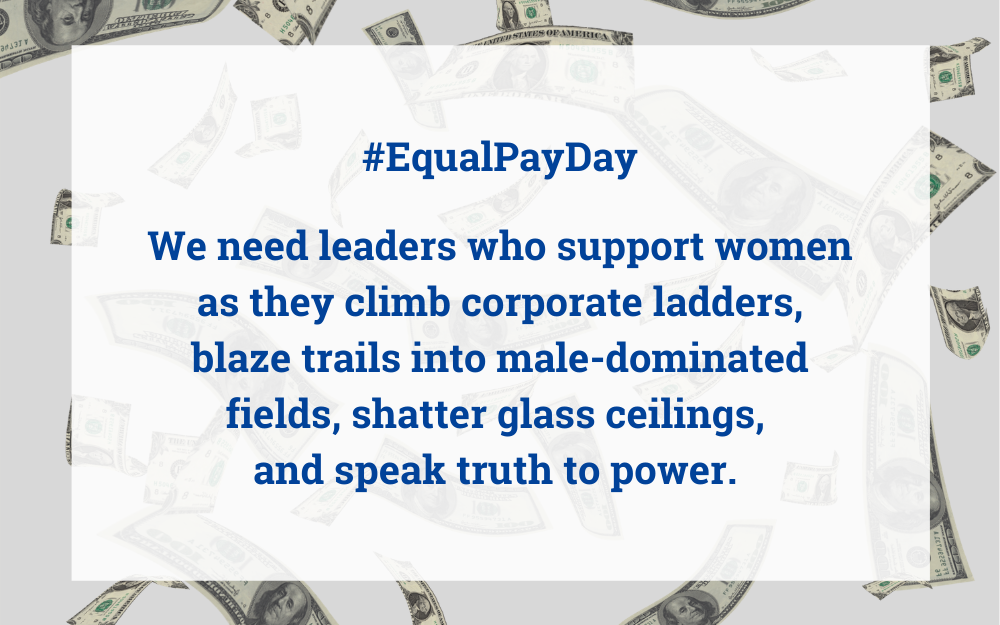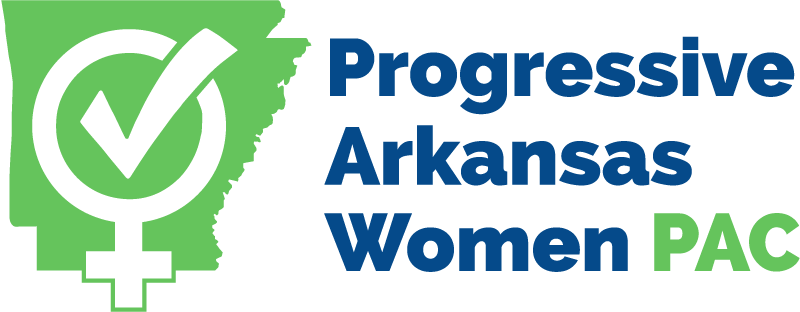
It has been 57 years since President Kennedy signed the Equal Pay Act into law. The law requires that men and women receive equal pay for equal work within the same workplace. It’s been 56 years since the Civil Rights Act of 1962 was enacted, which provides equal protections against discrimination based on a person’s national origin, race, religion, and gender.
Despite the enactment of these laws, today, March 31, 2020, has the undistinguished distinction of being Equal Pay Day. According to the National Committee on Pay Equity, this date identifies how far into the new year the average woman has to work to earn what a man earned the previous year. In other words, it takes the average woman 15 months to earn what the average white man earns in 12 months for equal work. As most of us know, women earn, on average, $0.80 for each $1.00 men earn for the same work.
The wage gap is even wider for women of color, particularly Black and Latina women, who make on average $0.62 and $0.54, respectively, compared to a white man’s $1.00. Equal Pay Day falls on August 13 this year for Black women and October 29 for Latina women. These are sobering figures and dates. We should all be embarrassed and called to action.
What does the pay gap mean over the course of a lifetime?
The U.S. Census Bureau indicates that women’s median annual earnings are an estimated $10,000 less than men’s annual earnings for equal work. Let’s think about what $10,000 buys. It buys approximately one year of tuition and fees for a four-year public university, an estimated 12 months of childcare or an estimated 7 months of premiums for employer-based health insurance. Over the course of a career, this difference in earnings can translate into a loss of $500,000 in income. We can all imagine what we’d do with an extra half a million dollars.
An estimated 60% of families live in a household with no stay-at-home parent, as the middle class has become increasingly reliant on women’s wages. Closing the pay gap for middle-class families would allow them to better afford childcare, save for retirement, and afford quality healthcare. Low-income families are even more dependent on women’s earnings with over half supported solely by a mother (often a single mother). Closing the pay gap would cut the poverty rate for these families in half, thereby reducing reliance on social safety net programs, which is good for the country at-large.
It’s important to note that the pay gap continues to have detrimental effects on women long after they leave the workforce.
And it’s important to note that the pay gap continues to have detrimental effects on women long after they leave the workforce. Retirement is often supported by a person’s private savings, pensions, and social security. Women rely most heavily on social security. For nearly 20% of retired women, social security is their only source of income, and for many women, it is their only source of income that is guaranteed for life.
Social security benefits are calculated based on an individual’s earnings history. Therefore, women generally receive smaller social security benefits than men because they are paid less than men and often have fewer years in the workforce due to time spent working outside of the workforce caring for children or family members. And women working at companies that match 401(k) contributions are shortchanged there as well since matching contributions are calculated off a smaller earnings base which leads to a smaller dollar amount contributed. Follow that with 401(k)s being invested and growing by a percentage rate over time, and that gap widens even more.
Why is this still a problem in 2020?
One of the leading causes of the gender pay gap is the lack of family-friendly employment policies in the U.S. It’s important to recognize that some corporations have implemented policies to address this and retain highly skilled employees. But most employers do not have policies in place to allow women (or men) to step outside of the workforce or reduce their working hours to address family needs (or give birth) while allowing them to return to full-time employment without negative consequences for their earnings.
Women are still far more likely than men to take time out of the workforce to care for young children, aging parents, or address other family needs. In 33 states and D.C., the cost of childcare for an infant is higher than the cost of a year of in-state tuition at a 4-year public college. This often pushes mothers out of the workforce until children are old enough to attend public school at age 4 or 5.
These years out of the workforce have lasting consequences for a woman’s income potential and for retirement security. For example, if a woman earning $60,000 per year took time out of the workforce for 3 years to give birth and care for young children, that woman loses not only the $180,000 in salary but also scheduled merit or cost-of-living wage increases. That woman also loses out on personal and employer contributions to retirement savings, sees a reduction in social security benefits which are calculated based on earnings, and loses experience (in the form of years) in the workforce that often negatively affects earnings in more subtle ways.
Studies show that parenthood for mothers is viewed by employers as a signal that they are less committed to their workplace and may take time off to care for children,while fatherhood is viewed as a sign of stability and an increased commitment to a man’s career.
Even expanding your family without taking years out of the workforce has different results for men and women. Working mothers often pay what is referred to as a “mommy penalty” after having children. On average, working mothers earn 3% less than women without children. On the other hand, fathers often receive what is known as a “daddy boost,” earning on average 15% more than men without children. Studies show that parenthood for mothers is viewed by employers as a signal that they are less committed to their workplace and may take time off to care for children, while fatherhood is viewed as a sign of stability and an increased commitment to a man’s career.
Wage secrecy is another factor that hurts women when it comes to narrowing the pay gap. Wage data is largely kept private. Workplace culture in the U.S. often discourages employees from discussing salaries and some companies even have policies forbidding such information sharing. This leads to women being underpaid without even knowing it. Not only does that hurt women in the job they currently hold, but it also hurts them in future jobs as they often undervalue themselves when negotiating a new salary.
Additionally, discrimination is often intangible. There is rarely proof of overt gender discrimination in the workplace today. But women routinely feel discrimination in the form of being overlooked for promotions, left out of internal committees or leadership groups, being steered toward lower-paying sectors of a company’s operations, and exclusion from networking opportunities. Stereotypes die hard. Men are often viewed as “supporting their families” while women are rarely viewed in such a manner despite the fact that women are the breadwinners in an estimated 40% of American households.
Let’s hammer it home.
Not only is the pay gap detrimental to women and their families, but it’s also bad for our economy. A key determinant of economic growth is the size of a country’s labor force. Increasing pay equity and women’s participation in the labor force would increase spending by households which generates demand which increases production which leads to economic growth.
We are over 55 years past the enactment of the Equal Pay Act and the Civil Rights Act. Discrimination still exists. While these and more recently passed laws have certainly helped narrow the gender pay gap, women, especially women of color, continue to be paid substantially less than men. And the market will not eliminate the gender pay gap. We wouldn’t need laws to ensure that workers are treated equally if relying on market forces was the answer.
Paid family and medical leave, universal childcare, and flexible work arrangements can help shrink the wage gap by making it easier for women (and men) to meet the needs of work and home. These issues will get the attention they deserve when our elected officials reflect the citizenry they serve.
Paid family and medical leave, universal childcare, and flexible work arrangements can help shrink the wage gap by making it easier for women (and men) to meet the needs of work and home. These issues will get the attention they deserve when our elected officials reflect the citizenry they serve. According to the Bureau of Labor Statistics, women currently make up 50.4% of the U.S. workforce. At the federal level, only 24% of Members of Congress are women. Arkansas’s General Assembly has a similar statistic with women accounting for only 24% of state legislators. Only two of our seven state constitutional office holders are female, and we have no women elected to federal office representing Arkansas.
We need leaders who support women as they climb corporate ladders, blaze trails into male-dominated fields, shatter glass ceilings, and speak truth to power. We believe the best way to support women in the workforce is by electing progressive women to office. That is our central mission. And one day soon we will break that ultimate glass ceiling.
We believe the best way to support women in the workforce is by electing progressive women to office. That is our central mission.
Lauren Henry Cowles is a consultant with a Washington, DC-based government affairs firm. Lauren spent nearly a decade working in the U.S. Senate before working as a federal lobbyist. A Little Rock native and Central High graduate, Lauren moved back to Little Rock from Washington, DC, in 2018 with her husband and their three children.
Sources:
- U.S. Census Bureau
- Bureau of Labor Statistics
- National Committee on Pay Equity
- Forbes, 3 Ways the Gender Pay Gap is Even Bigger than You Think, Shahar Ziv, July 2019
- US Congress, Joint Economic Committee, Gender Pay Inequality: Consequences for Women, Families and the Economy, April 2016
